Incorporating greenery into your interior design can redefine your space, bringing life, color, and a sense of tranquility to any room. Whether you’re just beginning your home decor journey or are a seasoned decorator looking to refresh your style, the addition of plants and botanical elements offers a timeless and versatile approach to design. By weaving natural elements into your home, you create an oasis that not only enhances aesthetic appeal but also boosts your well-being, making your home a sanctuary of comfort and inspiration.
Plants and greenery aren’t just decorative; they are living, breathing pieces that interact with your environment. This article will guide you through twelve innovative ways to seamlessly integrate greenery into your interiors, ensuring that your space feels vibrant and inviting. From selecting the right plants for your light conditions to creatively using planters, vases, and wall gardens, you’ll discover practical tips and fresh ideas that suit every taste and experience level. Get ready to transform your living spaces with nature’s touch, and embrace the joy of cultivating beauty and serenity in your home.
Choosing the Right Indoor Plants

Bringing indoor plants into your home is a delightful way to infuse life into your interior design. Start by considering the light conditions of your space, as this will guide you in selecting plants that thrive in your environment.
For spaces with low natural light, opt for plants like snake plants or pothos, which are known for their resilience. On the other hand, if you have bright, sunny areas, succulents and fiddle leaf figs can add a vibrant touch.
When arranging your plants, think about the visual weight and balance they add to a room. Place larger plants like rubber trees or monstera in corners or next to furniture to create a focal point, while smaller plants can be grouped on shelves or side tables for a layered effect.
Incorporating plants into your color scheme can elevate your design. Consider using planters that coordinate with your existing color palette—such as terracotta pots for a warm, earthy feel or sleek metallic planters for a modern touch.
For those ready to experiment, mix different textures and heights by combining trailing plants with bushy varieties. This creates visual interest and adds depth to your design, making your greenery not just an accessory, but a defining feature of the space.
Creating a Green Focal Point
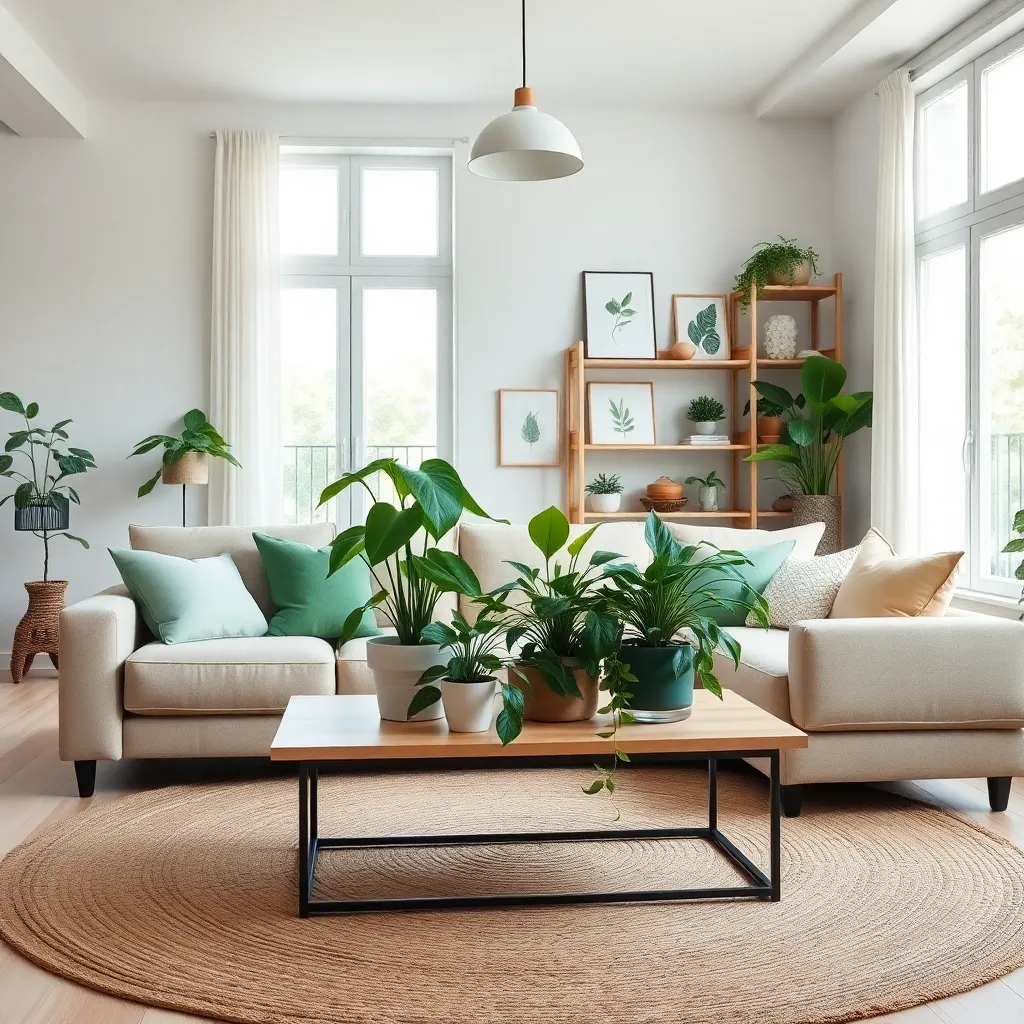
To create a striking green focal point in your space, consider utilizing a large statement plant, like a fiddle leaf fig or monstera. Position it in a spot that naturally draws the eye, such as near a window or beside a reading nook, ensuring it receives adequate light.
For a balanced look, complement your plant with furniture pieces that emphasize its lush appearance. Opt for neutral or earth-toned furniture to allow the greenery to truly pop, creating a serene and inviting atmosphere.
Experiment with varying heights and textures to add depth and interest to your green focal area. Try layering smaller plants on a nearby shelf or incorporating a hanging plant to draw the eye upward and create a cohesive look.
Advanced decorators might consider adding a textured backdrop, such as a woven or macrame wall hanging, to enhance the focal point. This additional layer can provide a bohemian vibe and further highlight the plant’s natural beauty.
Incorporating Vertical Garden Designs
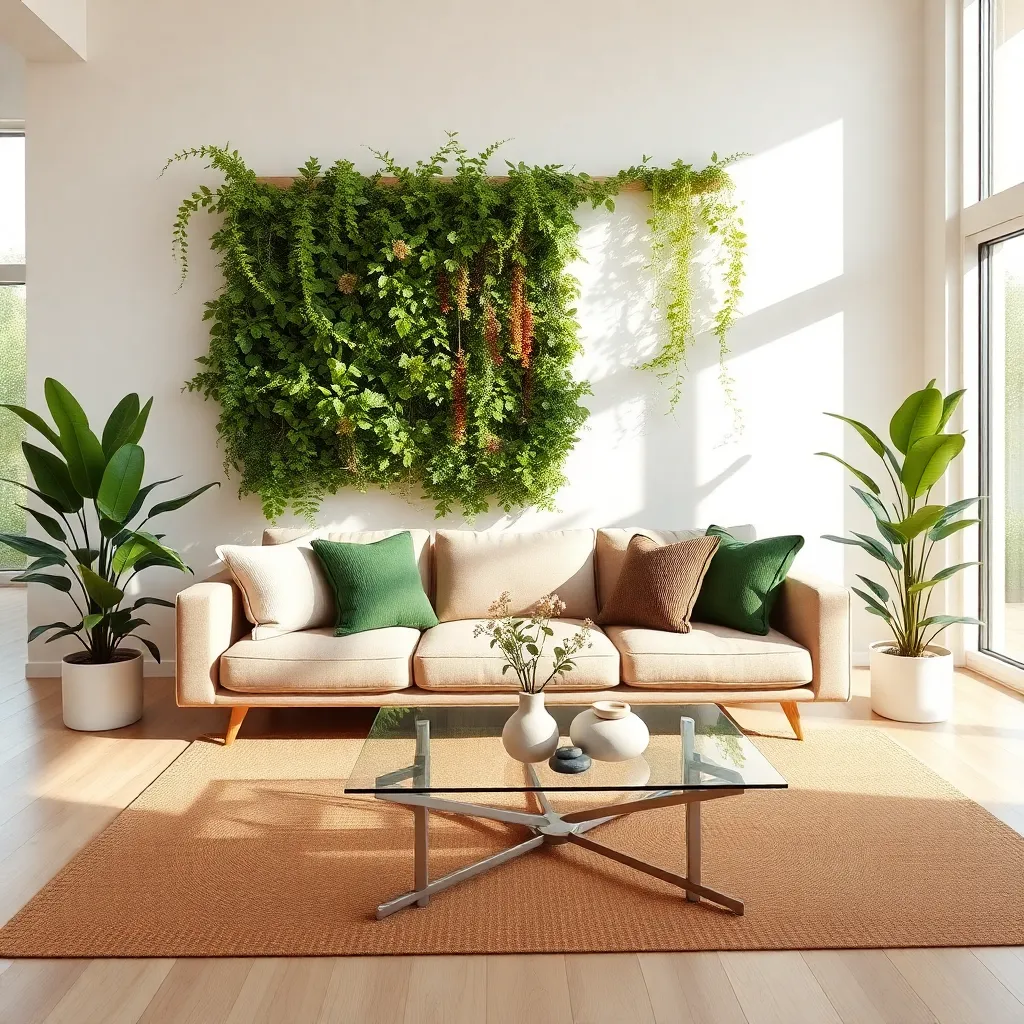
Vertical gardens are a stunning way to add greenery to your home while maximizing limited space. To start, select a wall that receives ample natural light for your vertical garden installation.
Consider using a variety of plant species to create a lush, textured effect. Incorporate trailing plants like pothos or ivy alongside upright species such as ferns or peace lilies for visual interest.
For a more advanced design, you can integrate a self-watering system to ensure your plants thrive with minimal maintenance. Choose lightweight, durable materials like PVC or metal for your vertical frame to support the garden without damaging your walls.
Placement is key when incorporating vertical gardens into your home. Position them in areas where they can serve as a natural artwork piece, like above a sofa or along a hallway.
Using Greenery for Cozy Corners
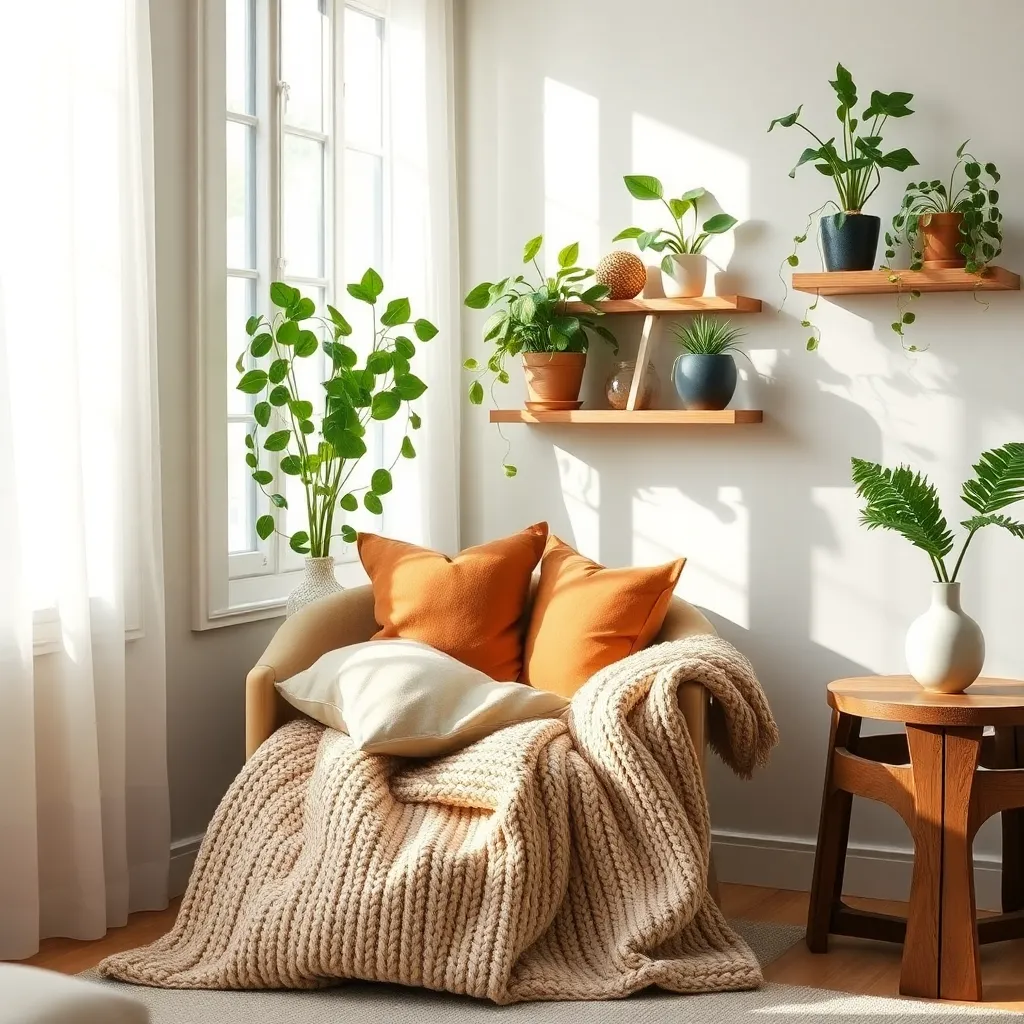
Transforming a corner into a cozy retreat can be easily achieved with the strategic use of greenery. To begin, select plants that thrive in low light, such as snake plants or pothos, which are both resilient and forgiving for beginners.
Place a large potted plant next to a comfy armchair to create a serene reading nook. Pairing greenery with soft textiles like a plush throw or a textured rug enhances the inviting atmosphere.
For an advanced touch, consider layering plants of varying heights to add depth and interest. Use a combination of floor plants, hanging planters, and small tabletop succulents to create visual diversity.
Lighting is crucial when using greenery to cozy up corners; opt for warm, ambient lights to highlight your plants’ natural beauty. Try string lights or a small floor lamp to cast a gentle glow that makes the space feel intimate and welcoming.
Balancing Plant Size and Space
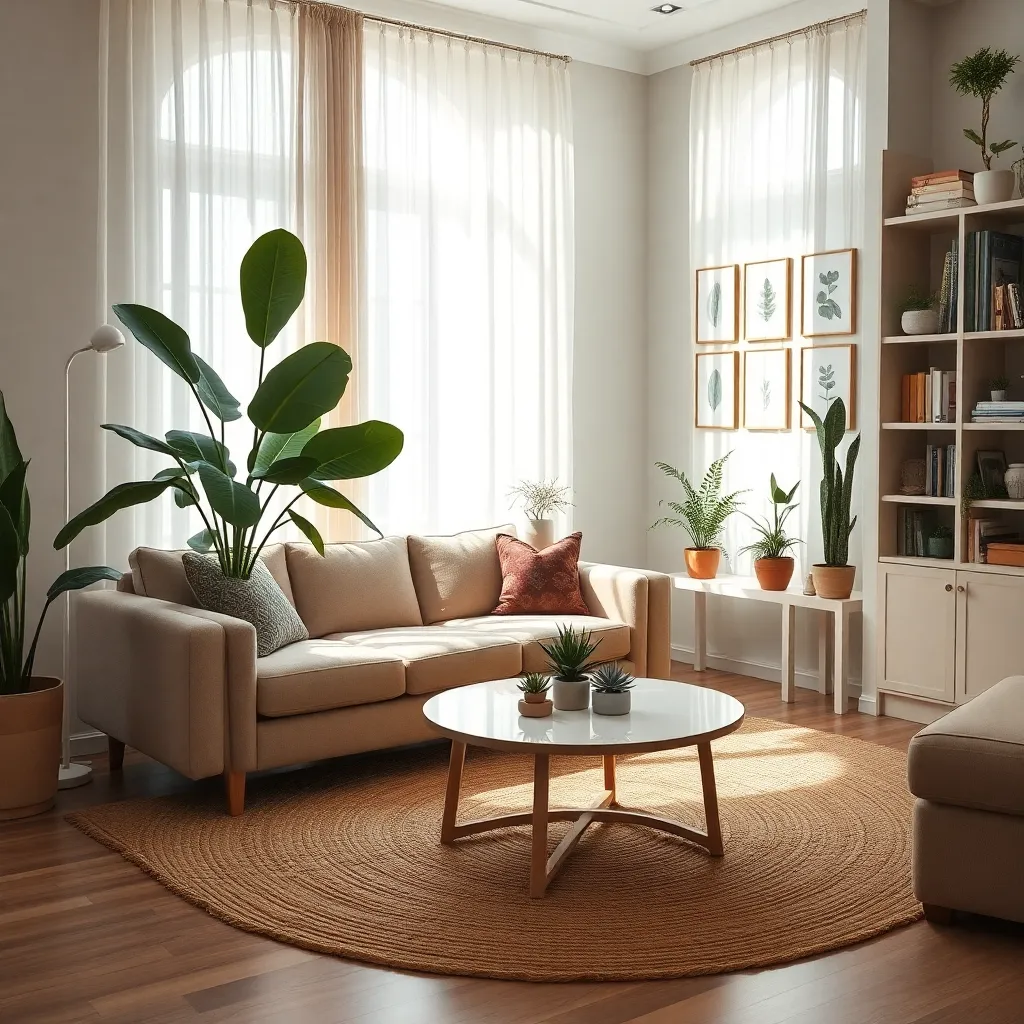
When incorporating plants into your interior design, it’s crucial to balance the size of the plant with the available space. Opt for larger plants like fiddle leaf figs or rubber trees in more expansive areas, where they can act as natural dividers or focal points. Smaller spaces, such as apartments or cozy nooks, can benefit from the delicate touch of succulents or small potted ferns on shelves or countertops.
Consider the height and width of your chosen plants in relation to your furniture. A tall plant next to a low-profile couch can create an appealing contrast and draw the eye upwards, adding depth to the room. For smaller plants, grouping them in threes on a coffee table or sideboard can create a visually pleasing arrangement without overwhelming the space.
Beyond size, think about the color and texture of your plants in relation to your room’s palette. Dark green leaves can complement neutral tones, while plants with variegated leaves can add visual interest to minimalist settings. Experiment with plant stands of different heights to create dynamic layers and enhance the overall aesthetic.
Lastly, take into account how much natural light your space receives, as this will affect plant health and placement. Place light-loving species near windows and use artificial lighting solutions for darker corners. Advanced decorators might explore creating a living wall, combining various plant types for a lush, textured effect that doesn’t occupy floor space.
Integrating Greenery into Minimalist Décor
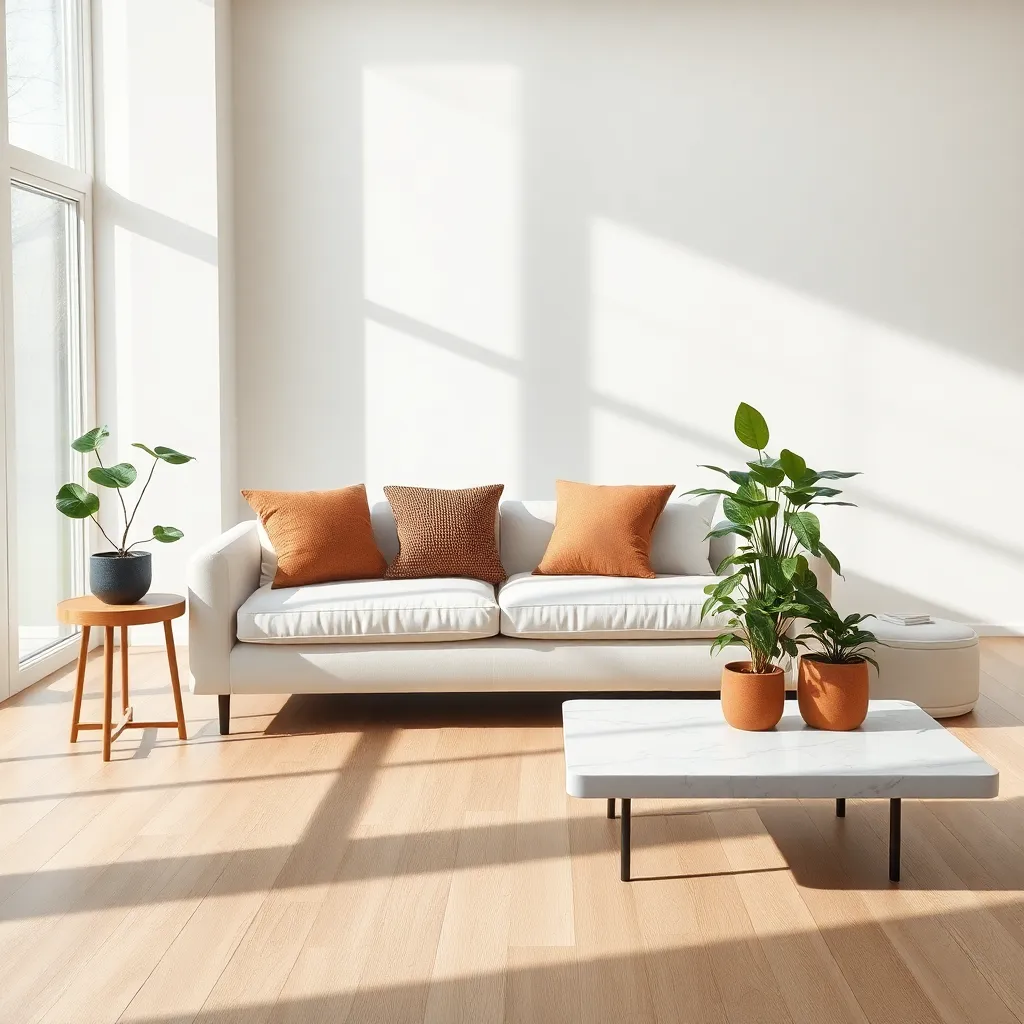
Incorporating greenery into minimalist décor can create a refreshing balance between simplicity and vibrancy. When choosing plants, opt for species with clean lines and simple forms like snake plants or fiddle leaf figs to maintain a minimalist aesthetic.
Consider the placement of your plants to enhance the minimalist vibe without overwhelming the space. Position plants in neutral-toned planters that complement your existing color scheme, such as white or beige, to blend seamlessly with your décor.
For a more cohesive look, group plants of different heights and textures together in a corner or on a wide shelf. This arrangement can add depth and interest to a room while keeping the overall look uncluttered and organized.
Advanced decorators can experiment with using greenery as a dynamic focal point in a room. Choose a large, statement plant like a monstera deliciosa and place it strategically near a window or a neutral-colored wall to let its natural beauty shine without overpowering the minimalist setting.
Mixing Real and Artificial Plants
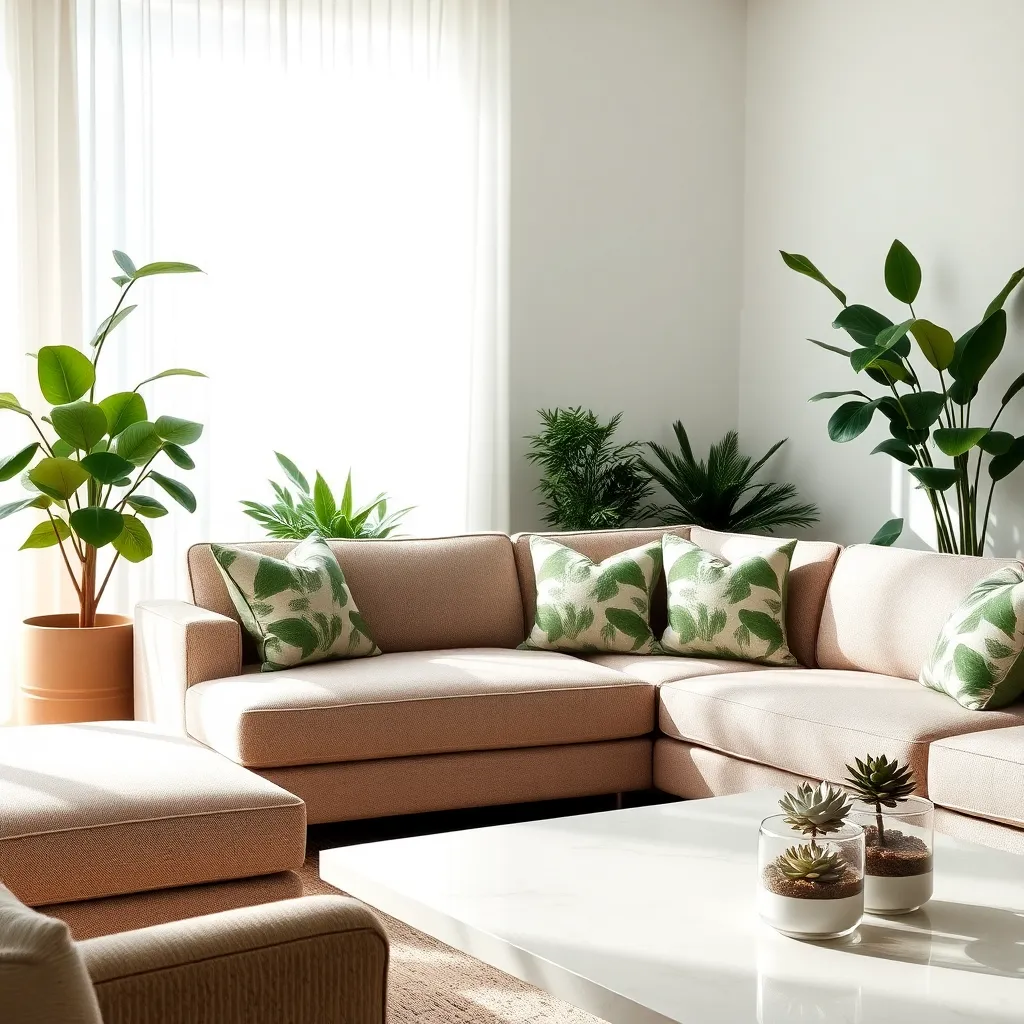
Mixing real and artificial plants in your home can create a dynamic and lively atmosphere while keeping maintenance manageable. Real plants offer natural beauty and air-purifying benefits, while artificial plants provide long-lasting greenery with minimal upkeep.
Start by selecting a variety of plants that complement each other in size and color. Consider using real plants for areas with natural light, such as windowsills, to ensure they thrive, while placing artificial plants in dimmer corners where real plants might not survive.
Incorporate different textures by mixing leafy plants with succulents or cacti. This not only adds visual interest but also allows you to experiment with different plant containers, such as ceramic pots, woven baskets, or metal planters, to match your interior style.
For a cohesive look, choose a color palette that harmonizes with your existing home décor. Pair vibrant green plants with neutral-toned furniture to brighten a room, or opt for deeper greens and rich planters to add sophistication to a more subdued space.
Advanced decorators can create a tiered effect by using plant stands or hanging planters to add height and dimension. This technique helps to draw the eye upwards and make small spaces feel larger, offering a professional touch to your interior design.
Selecting Pots and Planters Wisely
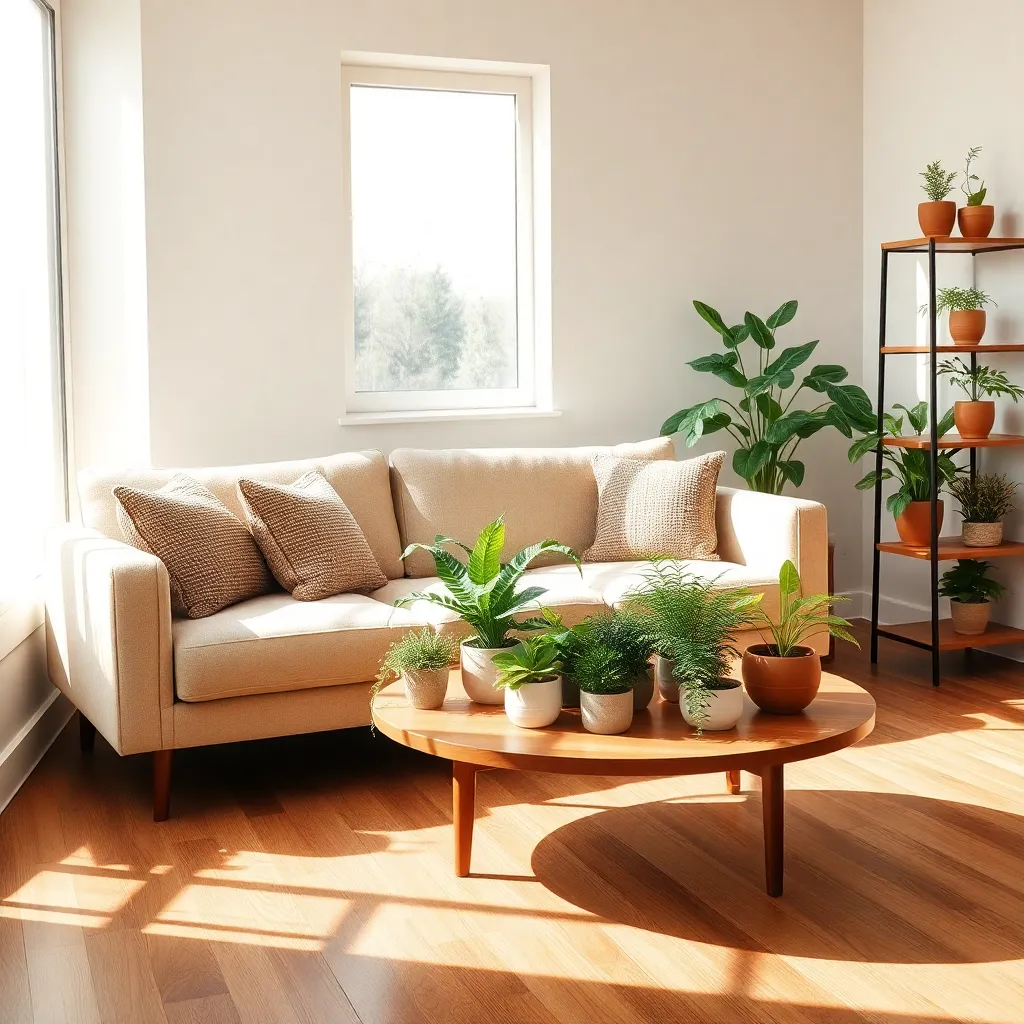
When selecting pots and planters for your interior, consider the material as it significantly impacts both aesthetics and functionality. Ceramic and terracotta pots offer a classic look and excellent breathability for plants, making them ideal for areas with good sunlight, while lightweight fiberglass or plastic options work well in darker corners where frequent repositioning might be necessary.
Incorporating color in your planters can enhance your overall design scheme. Opt for neutral tones like white, beige, or gray for a minimalist style, or choose bold colors that complement your existing palette to create a striking contrast that draws the eye.
Size and proportion are critical when it comes to planter selection. Small pots are perfect for window sills or shelves, whereas larger floor planters can make a statement in spacious living areas or entryways, adding depth and dimension.
For those looking to add a touch of sophistication, mixing different textures can elevate the space. Pairing smooth, glossy planters with rough, matte ones can create a visually interesting setup that adds depth and variety to your greenery display.
Highlighting Greenery with Lighting
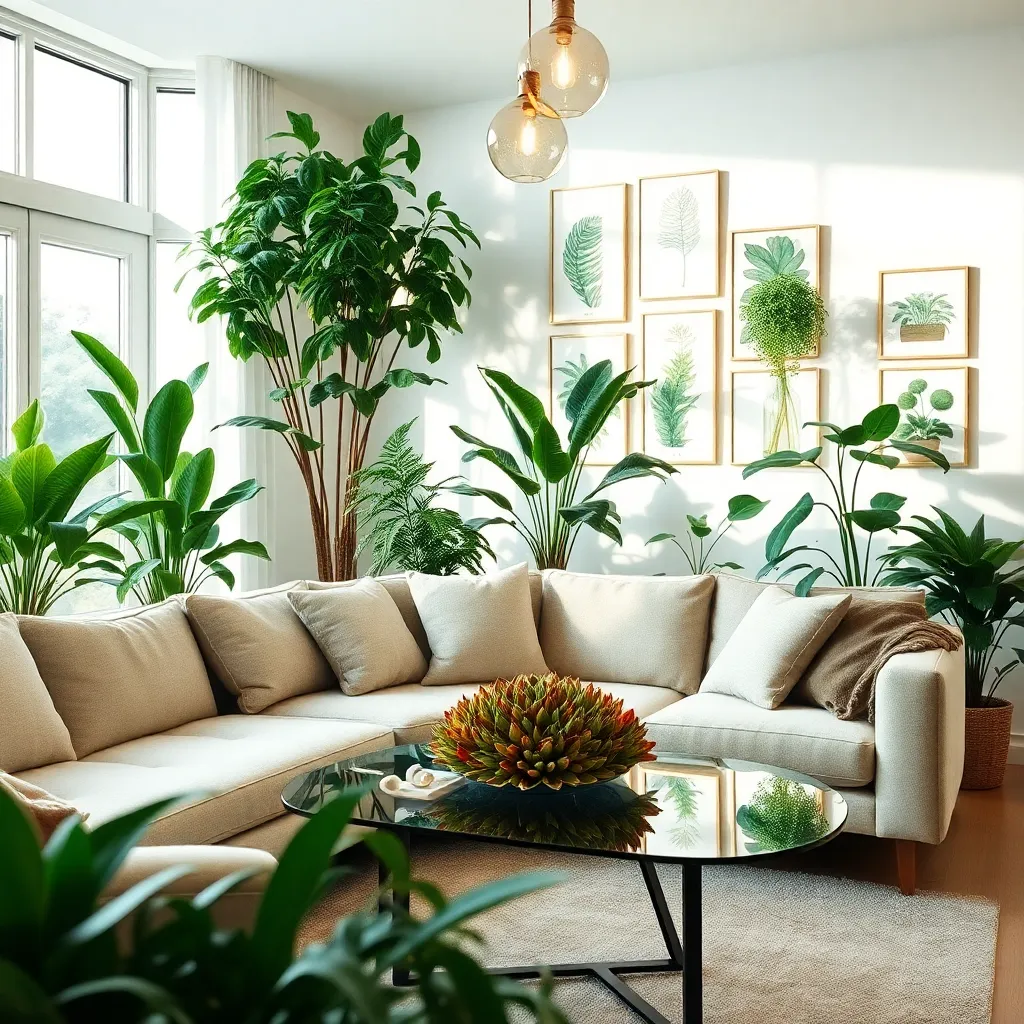
Incorporating lighting to highlight greenery can transform your plants into stunning focal points in any room. Opt for soft, directional lighting such as spotlights or LED strips to draw attention to your greenery without overwhelming the space.
Placing lights at different heights can add depth and interest. Consider using uplighting for tall plants like fiddle leaf figs or palms, which accentuates their height and creates dramatic shadows.
For smaller plants, a well-placed tabletop lamp can work wonders. Position the lamp so it not only illuminates the plant but also highlights the texture and color of the leaves, creating a cozy and inviting ambiance.
Advanced decorators might explore using colored LED lights to enhance the natural hues of their plants. This technique can be particularly effective with plants that have variegated or richly colored foliage, adding an unexpected pop of color to your decor.
Maintaining Indoor Plant Health
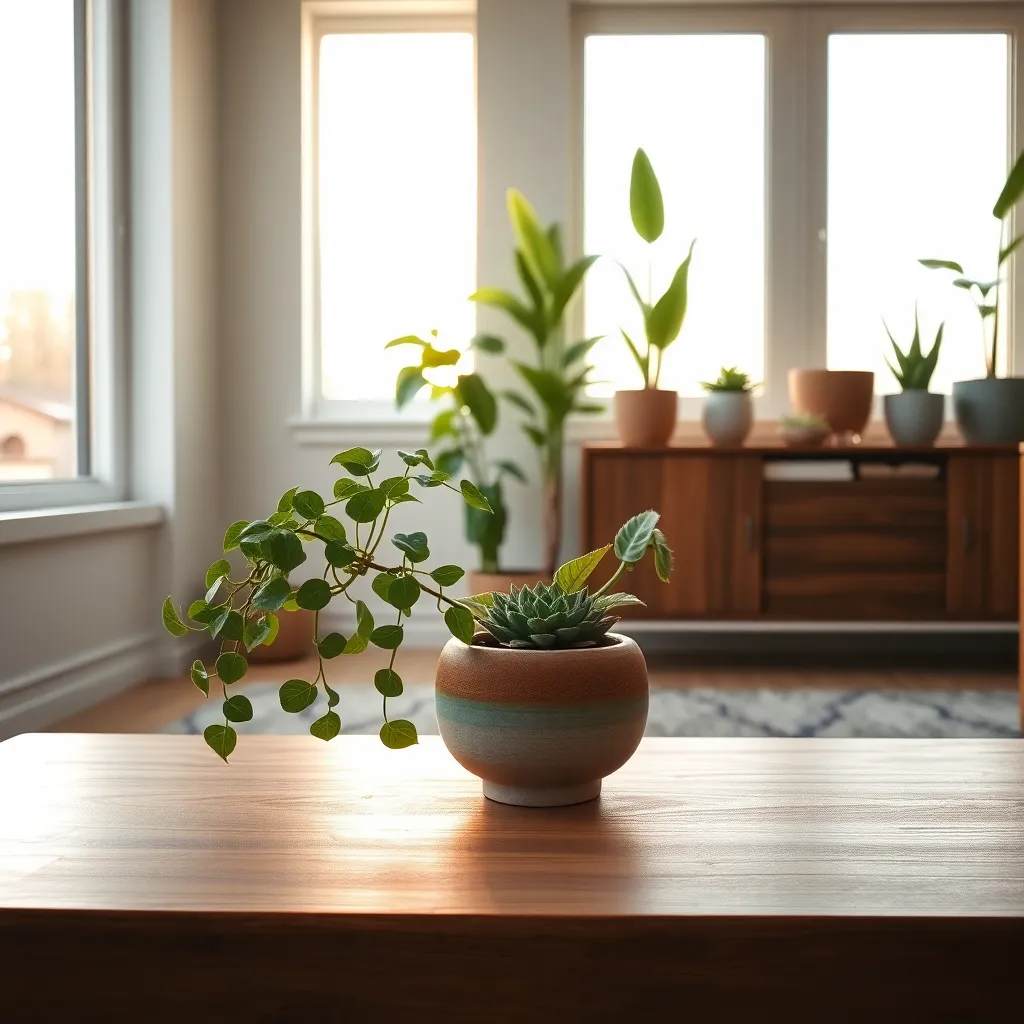
Maintaining indoor plant health is crucial for ensuring that your greenery continues to enhance your home’s aesthetic. Choose the right plants for your space by considering factors like natural light, humidity levels, and temperature.
Position plants in areas where they can receive the appropriate amount of sunlight. For example, a fiddle leaf fig thrives near a south-facing window, while snake plants are perfect for lower light conditions.
Watering routines are essential, and each plant has unique needs. Overwatering is a common mistake—use a moisture meter to determine when your plants truly need water, ensuring they remain vibrant and healthy.
Additionally, consider the aesthetics of your plant containers, as they contribute to your overall design. Choose pots in materials like terracotta or glazed ceramics to complement your room’s style and color scheme.
Advanced decorators might explore incorporating a mix of plant heights and textures to create depth. For instance, pair a tall, leafy plant with smaller succulents to add visual interest and dimension to your space.
Exploring Seasonal Plant Rotations
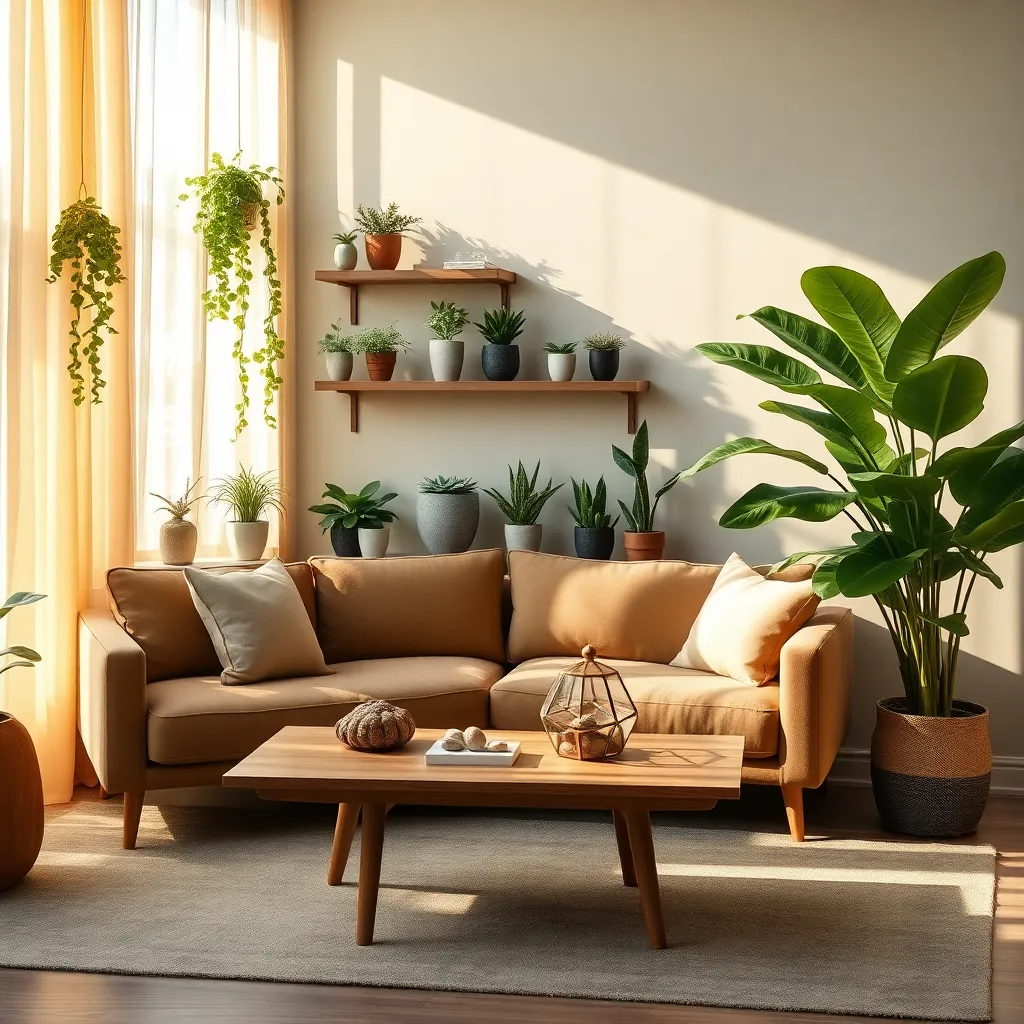
Incorporating seasonal plant rotations into your interior design can refresh your space throughout the year. By selecting plants that thrive in different seasons, you can ensure that your home always feels vibrant and alive.
During spring and summer, opt for lush, green foliage like ferns and palms that add a refreshing touch to your decor. These plants pair beautifully with light, airy fabrics and pastel color schemes, creating a seamless transition from outdoors to indoors.
As autumn approaches, consider incorporating plants with rich, warm hues such as crotons or mums. Placing these near darker wood furniture or in rooms with earthy tones can enhance the cozy, inviting atmosphere of your home.
In the winter months, evergreens like Norfolk Island pine or festive poinsettias can provide a touch of color and life when most outdoor plants are dormant. Position these plants near windows to maximize natural light, and consider using decorative planters that match your winter decor.
Pairing Greenery with Natural Materials
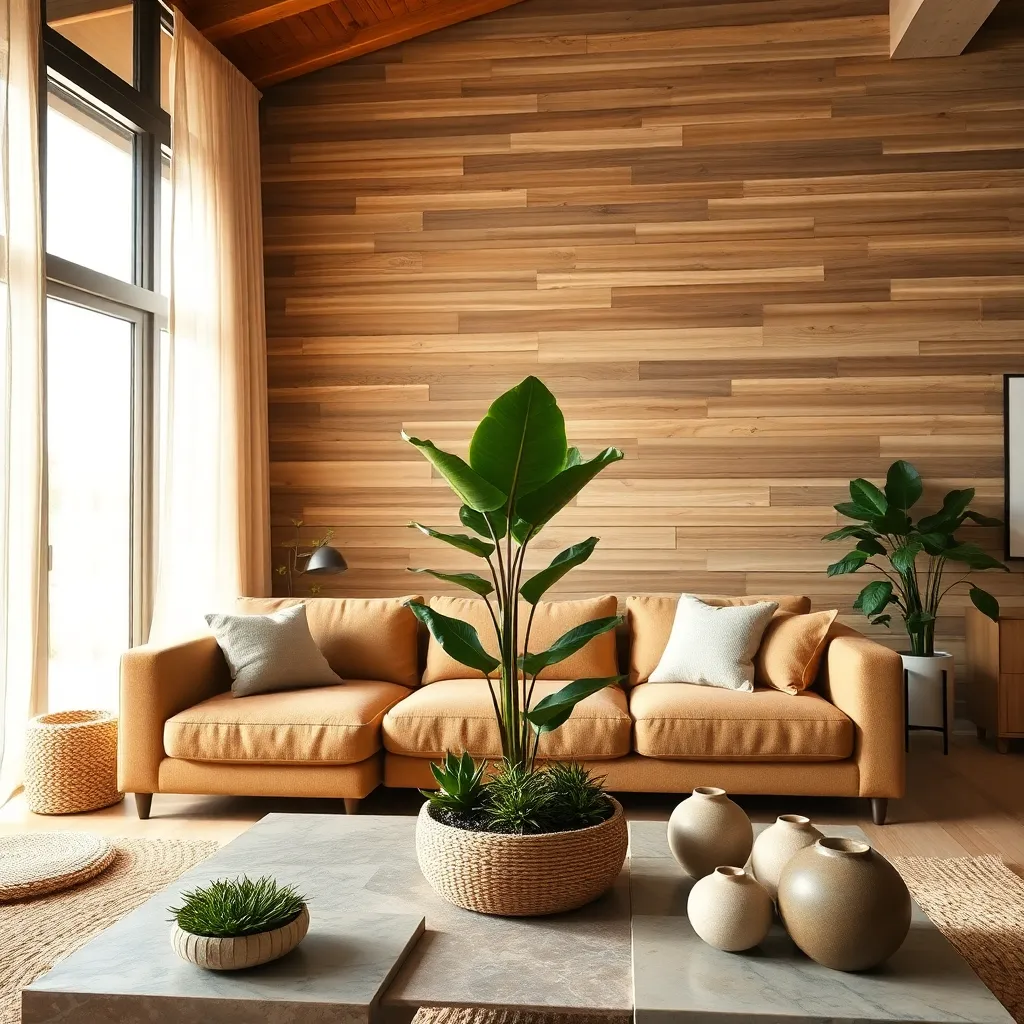
Incorporating greenery with natural materials can create a harmonious and inviting space. Begin by using wooden furniture that complements the lush green tones of your plants, enhancing the organic feel of the room.
Consider pairing a rich, dark wood dining table with vibrant green succulents as a centerpiece. This combination not only adds visual interest but also introduces a calming, earthy vibe to your dining area.
For a more relaxed setting, integrate soft, natural textiles such as linen or cotton alongside your plants. These materials can be used in pillows or throws and will create a cozy, inviting atmosphere that is both stylish and sustainable.
When selecting plants, think about the textures they bring and how they interact with natural materials. A soft fern
Conclusion: Growing Success with These Plants
Incorporating greenery into your interior design isn’t just about aesthetics; it’s about nurturing the relationships within your home. The 12 key concepts we explored—from choosing the right plants that symbolize growth to creating shared spaces that foster connection—highlight how nature can enhance communication, empathy, and intimacy. By inviting greenery into your space, you cultivate an environment that supports open dialogues, warmth, and mutual understanding.
As an actionable next step, why not start with a small plant that you and your partner can care for together? This simple act can become a symbol of your shared commitment to growth and harmony.
Remember, nurturing your environment is an investment in your relationship’s future. Bookmark this article now to revisit these ideas and reinforce your commitment to a thriving partnership. As you incorporate these green elements, you’re not just decorating a space; you’re laying the foundation for lasting relationship success. Embrace this journey with a heart full of hope and watch your bonds flourish in ways you never imagined. Your future together is as bright and vibrant as the greenery you choose to surround yourselves with.
